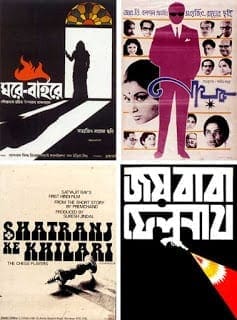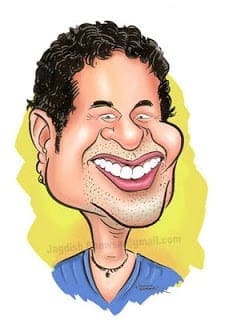
 Art: The expression or application of human creative skill and imagination, typically in a visual form such as painting or sculpture, producing works to be appreciated primarily for their beauty or emotional power.
Art: The expression or application of human creative skill and imagination, typically in a visual form such as painting or sculpture, producing works to be appreciated primarily for their beauty or emotional power.
It is that simple. Hence, Cinema is an art. Well, at least the above statement justifies so. Period.
Talking about Indian Cinema, because it concerns us, I need to make one thing clear. How much ever we hate our movies, at the end of the day, as avid-movie-lovers and as regular movie-goers, we watch almost everything that comes out on the holy day – “Friday”!
Indian Cinema is a journey which started when the first full-length motion picture in India was produced by Dadasaheb Phalke. The journey that told us amazing tales. The journey that showed us amazing actors. “The journey that defined our style of living.”
If you think Indian Cinema is not respected worldwide, then you couldn’t be more wrong. Likewise, if you think the mainstream movies nowadays define Indian Cinema, I repeat, you couldn’t be more wrong. Think.
If the profits a movie earned decided the “quality” of the movie, then I will have to say that we’ve made huge losses in terms of quality. A frank fact which ain’t a secret.
The quality deteriorated to such an extent that people are selling headache balms in the theaters and making “Huge” profits, mind you.
Going to the facts, Indian Cinema has given us people like Sathyajit Ray [Bengali], Ritwik Ghatak [Bengali], K.Vishwanadh [Telugu], K.Balachander [Tamil], Adoor Gopalakrishnan [Malayalam] etc.
For starters, I shall take the example of Sathyajit Ray, the man who won a Lifetime Achievement Award at the Academy Awards aka Oscar Awards Ceremony. Not bad for under-achieving Indians, right?
Satyajit Ray known for the famous “Apu Trilogy” is considered and is one of the greatest movie-makers ever. “The Apu Trilogy” which consists of Pather Panchali, Aparajito and Apur Sansar, is regarded as one of the best series of movies alongside the likes of “The Godfather Series” etc.
His partnership, with Soumitra Chatterjee [An actor] is considered as a “dream combination” along the likes of Martin Scorcese and Robert Di Niro. Movies made by him are still considered as masterpieces, believe it or not.
So what is wrong with Indian Movies of the 21st Century? The century which gave us awe-inspiring movies like Dev D, Udaan also gave us “Must-forget-to-lead-a-happy-life-in-the-future” movies like Tees Maar Khan, Kites etc.
An estimated 1500 movies of all languages are made in India and how many of them are worthy of our precious time nowadays? It’s a sad fact. For every good movie made, there are a 100 “stinkers” made.
Which obviously raises the question, “Where does it all go wrong?”. Frankly speaking, it is a chain of misjudgements, misconceptions, misunderstandings which give birth to “A bad movie”.
A Bad Movie: A bad movie is not something which fetches the producer losses. A bad movie doesn’t necessarily imply that there is no story. A bad movie, in my honest opinion, originates from the following, one or many:
Lack of clarity of thought for the Film-maker.
Ill-judgement by the producer.
Unnecessary twists and turns in fate in the story, which are completely uncalled for.
The need to satisfy common man’s ego which defines movie as a form of entertainment.
Not enough importance given to Characters
There might be much more to it, but I can mention these as the primary ones.
Indian Cinema is categorized into two types:
1. Masala Film
2. Parallel Cinema
Masala Film: Yes, this is a term given to a section of Indian Cinema by critics all over the world. As they define it, Masala is a style of Indian cinema, especially in Bollywood and South Indian films, in which there is a mix of various genres in one film. For example, a film can portray action, comedy, drama, romance and melodrama all together. Many of these films also tend to be musicals, including songs filmed in picturesque locations, which is now very common in Bollywood films. Plots for such movies may seem illogical and improbable to unfamiliar viewers.
As we all know, Jack of all trades, shit in all! These movies entertain many people, entertain with their humor, erotica, and most definitely with their stupidity!
Parallel Cinema: The point I’ve been trying to prove all along, parallel cinema is the “Classic Indian Art”! The Ray’s, The Ghatak’s etc. are the reason why this art still prevails. Some movies in this category are considered as the greatest movies of all time.
Parallel Cinema in 21st century is hard to find. Many film-makers of this generation are so much into the complication of the plot, that they get confused and screw it up. It’s such a pity because we’d love the legacy to continue.
The main reason why Masala Films are being made is due to two factors:
1. Masses
2. Youth
That speaks for itself. Both fickle-minded, entertainment demanding, and moreover, large in number. Now due to this, many film-makers who need a break into the B-wood etc. tend to make masala films. Even some honest movie-makers fall for the fact that Parallel Cinema gets Critical Acclaim and not the money to earn a living, initially. Critical Acclaim to a movie by a director will be like an orgasm for him/her.
Well, nowadays a 3rd category of movies are flourishing. I like to call them “Bold or Honest Indian Cinema”. Dev D, Udaan, Gulaal, A Wednesday etc. fall right under this category. They ain’t masala films, they ain’t Parallel Cinema either. They earn money, and critical acclaim, if rightly spoken, they fetch the director an Orgasm and his/her best sex ever. This is actually a very good sign because they are providing better cinema for one and all. But again there is a hitch. The media calls these movies, Multiplex Movies, owing to the fact that they attract a large section of urban movie-goers and not the masses.
So, enough of the past and present, what about the future of Indian Cinema?
It’s volatile.
For obvious reasons, masala films wont end anytime soon, the better part is about the other types, if they do good, we are safe. The onus is on some directors like Anurag Kashyap, Vishal Bharadwaj, Shyam Benegal, Ram Gopal Varma etc. and of course the hugely talented and hugely aspiring next generation of independent film-makers. Also with the moneybags called producers. It’s their wisdom which decides the outcome of a movie.
Life doesn’t end there, we will still watch all kinds of movies, at least I am tempted to do so. To conclude, Movies are the way of life!






Be the first to comment